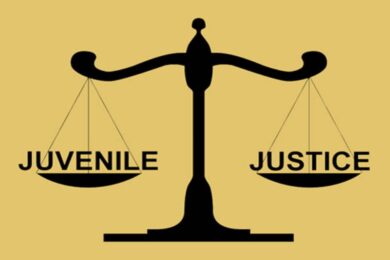
Introduction
The Right to Equality is the bedrock of Indian democracy, enshrined as a Fundamental Right under Articles 14 to 18 of the Indian Constitution. It ensures that every citizen is treated equally before the law and is protected from any form of discrimination. This right reflects the core ideals of liberty, justice, and dignity — essential for a truly democratic and inclusive society.
As India grapples with persistent social and economic inequalities, the Right to Equality remains both powerful and aspirational. This blog explores the scope, constitutional provisions, landmark judgments, limitations, and challenges related to the Right to Equality.
1. Constitutional Basis: Articles 14 to 18
The Right to Equality is guaranteed under Part III of the Constitution:
Article 14 – Equality Before Law and Equal Protection of Laws
Guarantees equality before law (a British concept) and equal protection of the laws (an American concept).
Prohibits discrimination by the state.
Allows reasonable classification but prohibits arbitrary discrimination.
Landmark Case: E.P. Royappa v. State of Tamil Nadu (1974) – Equality is antithetical to arbitrariness.
Article 15 – Prohibition of Discrimination
Prohibits discrimination on grounds of religion, race, caste, sex, or place of birth.
Permits special provisions for:
Women and children
SCs/STs
Socially and educationally backward classes
Landmark Case: Indra Sawhney v. Union of India (1992) – Validated reservations for OBCs but capped them at 50%.
Article 16 – Equality of Opportunity in Public Employment
Guarantees equal opportunity in matters of public employment.
Permits reservations for backward classes, SC/ST, and EWS under certain conditions.
Landmark Case: M. Nagaraj v. Union of India (2006) – Upheld the constitutional validity of reservations in promotions but required data-based justification.
Article 17 – Abolition of Untouchability
Declares untouchability as abolished and its practice a punishable offense.
Enforced through Protection of Civil Rights Act, 1955 and SC/ST (Prevention of Atrocities) Act, 1989.
Impact: Social revolution — legal empowerment of Dalits and marginalized groups.
Article 18 – Abolition of Titles
Prohibits the state from conferring titles (except military or academic distinctions).
Prevents creation of artificial aristocracy.
Landmark Case: Balaji Raghavan v. Union of India (1996) – Upheld that state awards like Bharat Ratna do not violate Article 18.
2. Doctrine of Reasonable Classification
The judiciary allows the state to treat people differently if the classification is reasonable, based on:
Intelligible differentia: A clear basis of classification.
Rational nexus: The classification must relate to the objective of the law.
This principle ensures that substantive equality is achieved without violating Article 14.
3. Reservations and Affirmative Action
To realize substantive equality, the Constitution allows positive discrimination:
SC/ST Reservations (Articles 15(4), 16(4))
OBC Reservations (post-Mandal Commission)
EWS Reservations (103rd Constitutional Amendment, 2019)
Women’s Reservation in education, jobs, and politics
These measures aim to uplift historically marginalized communities, ensuring level playing fields.
4. Judicial Interpretation and Expansion
Over the decades, Indian courts have interpreted the Right to Equality expansively:
a. Arbitrariness = Inequality
In Maneka Gandhi v. Union of India (1978), Article 14 was interpreted to strike down arbitrary state action.
b. Intersection with Other Rights
In Navtej Singh Johar v. Union of India (2018), Section 377 IPC (criminalizing homosexuality) was struck down as violative of Article 14 and 21.
c. Gender Equality
In Joseph Shine v. Union of India (2018), the adultery law was invalidated as discriminatory toward women.
5. Limitations and Exceptions
The Right to Equality is not absolute:
The state can make special provisions for disadvantaged groups.
Private sector employment is largely outside the scope of Article 16.
Moral, security, and public order exceptions exist.
Certain posts (like President, Governor) have immunity under Article 361.
6. Major Challenges in Implementation
a. Caste Discrimination
Despite Article 17, caste-based discrimination persists in housing, jobs, education, and social interaction.
b. Gender Inequality
Unequal pay, limited representation in leadership roles, and violence against women remain issues.
c. Class Divide
Economic disparity limits the effective realization of equality for the poor.
d. Judicial Backlogs
Delay in justice delivery affects timely enforcement of equality rights.
e. Identity Politics
Sometimes, reservations are used more as vote bank tools rather than instruments of empowerment.
7. Recent Developments and Debates
a. EWS Quota (2019)
Introduced 10% reservation for Economically Weaker Sections, even from general category.
Upheld by the Supreme Court in Janhit Abhiyan v. Union of India (2022).
b. Maratha Reservation Case
Jaishri Laxmanrao Patil v. State of Maharashtra (2021) – Struck down Maratha quota for exceeding 50% limit.
c. Women’s Reservation Bill
The 128th Constitutional Amendment Bill (2023) proposes 33% reservation for women in legislatures.
If enacted, it will have far-reaching implications for gender equality.
8. Way Forward
To make the Right to Equality truly effective:
📌 Strengthen education and awareness about constitutional rights.
📌 Bridge the digital and economic divide to improve access.
📌 Ensure proper implementation of reservation policies.
📌 Promote legal reforms in areas where outdated laws enable discrimination.
📌 Enhance accountability in public service recruitment and promotion processes.
Conclusion
The Right to Equality is not just a legal entitlement but a social and moral commitment to justice and fairness. Articles 14 to 18 create a robust framework to eliminate discrimination, but law alone cannot eradicate inequality. It must be supplemented by policy, awareness, institutional integrity, and active public engagement. As India evolves into a modern and inclusive republic, the constitutional promise of equality must remain both the goal and the guiding principle.








No Comments